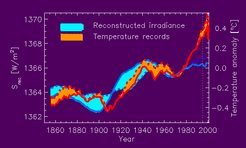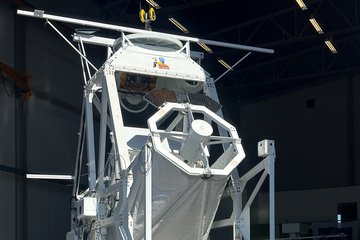Modelling and understanding of solar irradiance variations
Earth climate models rely on a detailed knowledge and understanding of solar variability on different time scales.
The climate on the Earth has undergone a dramatic change over the last century. The dominant supplier of energy into the complex climate system is the Sun. It affects Earth's climate through the variation of both its total brightness and its spectrum, especially in the UV. The changes are driven by variations of the solar surface magnetic field. The main aim of the PhD projects in this field is to gain better understanding of sources of the variability of the solar brightness and the photospheric magnetic field and to reconstruct past variability over as long periods in the past as possible, in order to provide reliable input to climate and atmospheric models.
There are a number of PhD topics in this field, which can be more theory or data oriented. Modern high-resolution data (e.g., from Solar Orbiter, Solar Dynamics Observatory, the forthcoming Aditya-L1 mission, or ground-based Ca II K observations) can help us to improve our understanding of the mechanisms of the solar variability. Past irradiance reconstructions will make use of the newest radiocarbon data and/or historical solar full-disc photographs in Ca II K line.













